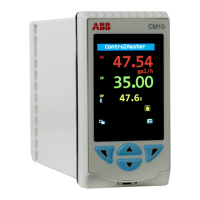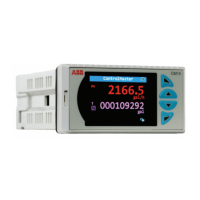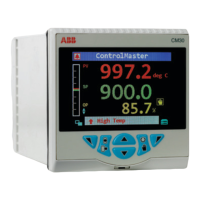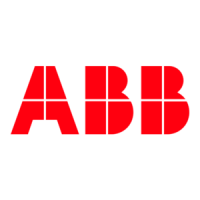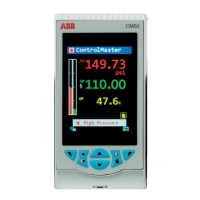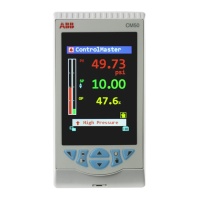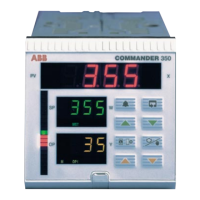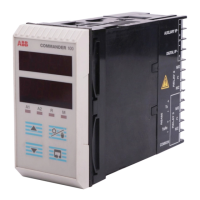ControlMaster CM30, CM50 and CMF310
Universal process controllers,
1
/4,
1
/2 DIN and fieldmount 7 Advanced Level
50 IM/CM/ED–EN Rev. X
…Control / …Loop 1 (2) Control
Control Action If the required controller action is known it can be set using this parameter. Otherwise it can
be set to Unknown and Autotune (see page 29) determines and selects the correct action.
Direct
For applications where an increasing process variable requires an increasing output to
control it.
Reverse
For applications where an increasing process variable requires a decreasing output to
control it.
Unknown
For applications where the control action is not known (run Autotune to set the control
action automatically).
On/Off Hysteresis
Autotune
PID
Refer to Basic Level on page 28.
Gain Scheduling
Gain Scheduling is used to improve the control of non-linear
processes where the non-linearity is not time dependent.
Processes with time-dependent non-linearity can be controlled
with adaptive control. The gain scheduler selects different PID
parameters (see page 30) according to the value of a
user-selected reference signal.
3 Different settings for PID parameters can be used, within 3
ranges set by the user-defined parameters (Limit 1 and Limit 2
[see page 51]) that are expressed in the engineering range of the
Gain Scheduling (GSRef) reference signal. When the value of the
reference signal passes one of the limits the next set of PID
parameters is switched in.
How Gain Scheduling Works with Autotune
When tuning is first performed, or after Gain Scheduling (or Autotune [see page 29]) is reset, the autotuner calculates
PID parameters for the set selected by the GSRef signal and also copies those values into the other 2 sets of PID
parameters.
If Autotune is then run with Gain Scheduling in one of the other 2 sets (see chart above), it calculates the PID values for
the set selected by GSRef and also copies these to the set that was not calculated before.
If the Autotune is run with GSRef in the third set, it calculates the PID values for that set and leaves the other 2 sets
untouched.
Any further running of the autotuner updates only the set that is selected at the time until Gain Scheduling (or
Autotune) is reset. For example:
If Autotune is run with GSRef < Limit 1, it calculates values for the first set of PID parameters and also copies
these into the other 2 sets as well.
If Autotune is then run with GSRef > Limit 2, it calculates PID values for the third set of PID parameters and
also copies these to the second set.
If Autotune is then run with GSRef between Limit 1 and Limit 2, it calculates values for the second set of PID
parameters and leaves the other 2 sets untouched.
P I D GsRef
PB TI3 TD
PB TI2 TD
PB TI1 TD
TI
Gsref
Set 3
Set 2
Set 1
Limit
2
Limit
1
